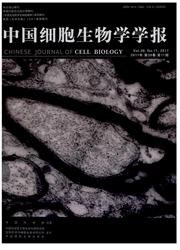

 中文摘要:
中文摘要:
Colorectal 癌症(CRC ) 是世界范围的癌症相关的死亡的一个领先的原因。我们试图为 CRC 的早诊断作为潜在的 biomarkers 发现新奇分子。没有浆液的调节媒介成功地从三 CRC 纸巾和邻近的正常织物被收集。基于 iTRAQ 的量的 proteomic 分析被使用在在主要 CRC mucosa 和邻近的正常 mucosa 之间的 secretome 比较差别。145 种蛋白质的一个总数被识别。这些蛋白质, 29 在 CRC 和正常织物之间是显著地不同的。Tropomyosin 2 (TPM2 ) 展出了最重要的差别;因此,这蛋白质为进一步的确认被选择。量的即时 PCR 显示 TPM2 的 mRNA 表示显著地与配对的邻近的正常织物相比在 CRC 织物减少了。Immunohistochemical 分析也证实 TPM2 恰好在 CRC 织物在蛋白质层次被检测。在摘要,这研究为未来 biomarker 应用揭示了潜在的分子并且为联系癌症的 secretome 的微分分析提供了一条有效途径。TPM2 可能为 CRC 的早诊断是珍贵的。
 英文摘要:
英文摘要:
Colorectal cancer (CRC) is a leading cause of cancer-related deaths worldwide. We aimed to find novel molecules as potential biomarkers for the early diagnosis of CRC. A serum-free conditioned medium was successfully collected from three pairs of CRC tissue and adjacent normal tissue, iTRAQ-based quantitative proteomic analysis was applied to compare the differences in secretome between primary CRC mucosa and adjacent normal mucosa. A total of 145 kinds of proteins were identified. Of these proteins, 29 were significantly different between CRC and normal tissue. Tropomyosin 2 p (TPM2) exhibited the most significant differences; as such, this protein was selected for further validation. Quantitative real-time PCR indicated that the mRNA expression of TPM2 significantly decreased in the CRC tissue compared with the paired adjacent normal tissue. Immunohistochemical analysis also confirmed that TPM2 was barely detected at protein levels in the CRC tissue. In summary, this study revealed potential molecules for future biomarker applications and provided an efficient approach for the differential analysis of cancer-associated secretome. TPM2 may be valuable for the early diagnosis of CRC.
 同期刊论文项目
同期刊论文项目
 同项目期刊论文
同项目期刊论文
 期刊信息
期刊信息
